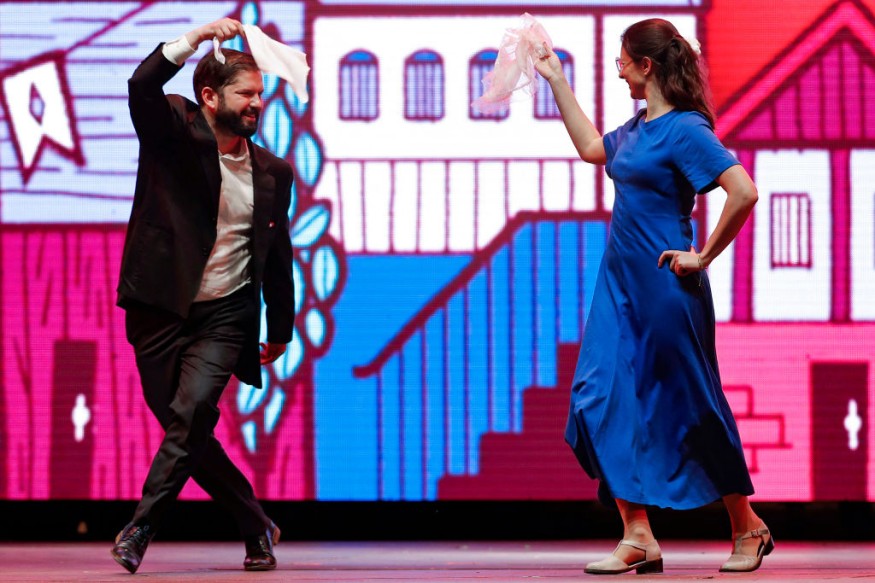Chile National Dance La Cueca: Know More About This Courtship Dance

Throughout history, humans have found inspiration in nature and transformed it into various forms of artistic expression. One example is the Chile folk dance called la cueca chilena, or simply la cueca.
The roots of la cueca can be traced back to the admiration and amusement Chileans found in the courtship behavior of roosters and hens. This fascination gave birth to one of the most enjoyable dances in Latin America.
Over time, la cueca has evolved from a courtship dance into a means of satire during challenging times, a tool of social control, and, ultimately, a form of protest. Today, it stands as a testament to the creativity and resilience of the Chilean people.
La cueca holds a significant place in Chilean culture, society, and history, earning its status as the national dance of Chile. Passed down through generations, this lively dance has transformed, symbolizing Chilean heritage.
In exploring la cueca, let us delve into the reasons behind its enduring relevance after all these years, its connection to the courtship rituals of roosters and hens, and interesting facts about this traditional dance.
READ NEXT : 5 Bolivian Dances That Are Simply Spectacular
'La Cueca' History
The origins of la cueca chilena trace back to a Peruvian dance called "zamacueca," which, in turn, evolved from the zamba-a dance heavily influenced by African and Creole traditions prevalent in South America, per Spanish Academy.
During the 1820s, zamacueca gained significant popularity in Chile and gradually underwent adaptation by Chilean dancers.
While it is essential to acknowledge the strong influence of zamacueca on la cueca, it is important to note that they are distinct dances with unique characteristics. La cueca draws inspiration from many dance forms originating from the Americas and Europe.
These diverse influences include Arabic-Andalusian dances that enjoyed popularity in 19th-century Spain. Over time, through the contributions of dancers and musicians, these dance styles merged and evolved into the traditional Chilean dance we know today as la cueca.
In the 20th century, la cueca experienced a surge in popularity across Latin America, particularly in neighboring countries, where it became known as "la chilena."
Chilean sailors and travelers played a significant role in spreading the dance throughout the region, enabling people from diverse backgrounds to learn and embrace its rhythmic movements.
Chilean dancers skillfully emulate the courtship rituals of roosters and hens when performing la cueca. Through graceful movements of the hands, hips, and entire body, they vividly depict the tender and affectionate dance of the birds.
This resemblance to rooster courtship is the reason behind the dance's colloquial nickname, the "rooster courtship" dance.
'La Cueca' Movements and Clothing
The choreography of la cueca is characterized by circular movements, alternating semicircles known as "half moons," and turns towards and away from the dance partner, according to Pepe's Chile.
The dance occurs within an imaginary circle, with the man occupying one half and the woman occupying the other. As the instrumental entry music sets the mood, the dance begins with a promenade, where the man invites the woman to join him by extending his arm.
During this prelude, the couple stands facing each other at approximately three meters, setting the stage for the rhythmic symphony.
Before the commencement of the song, the couple synchronizes their movements by clapping their hands to the beat of the music, further establishing the rhythm and enhancing the connection between the dancers.
True enthusiasts of la cueca, particularly during the September Independence Day celebrations, embrace the opportunity to dress in traditional Chilean attire when engaging in the dance.
The attire adds a touch of authenticity and reverence to the performance. Men don Chilean cowboy hats, shirts, flannel ponchos, riding pants, short jackets, riding boots, and spurs, embodying the spirit of the Chilean gaucho.
Women adorn themselves in flowered dresses complemented by aprons, paying homage to the country's rich cultural heritage.
READ MORE : Chile Travel Guide
This article is owned by Latin Post.
Written by: Bert Hoover
WATCH: La cueca completa Paso a paso - From Marcos Constanzo
Subscribe to Latin Post!
Sign up for our free newsletter for the Latest coverage!
© 2025 Latin Post. All rights reserved. Do not reproduce without permission.















